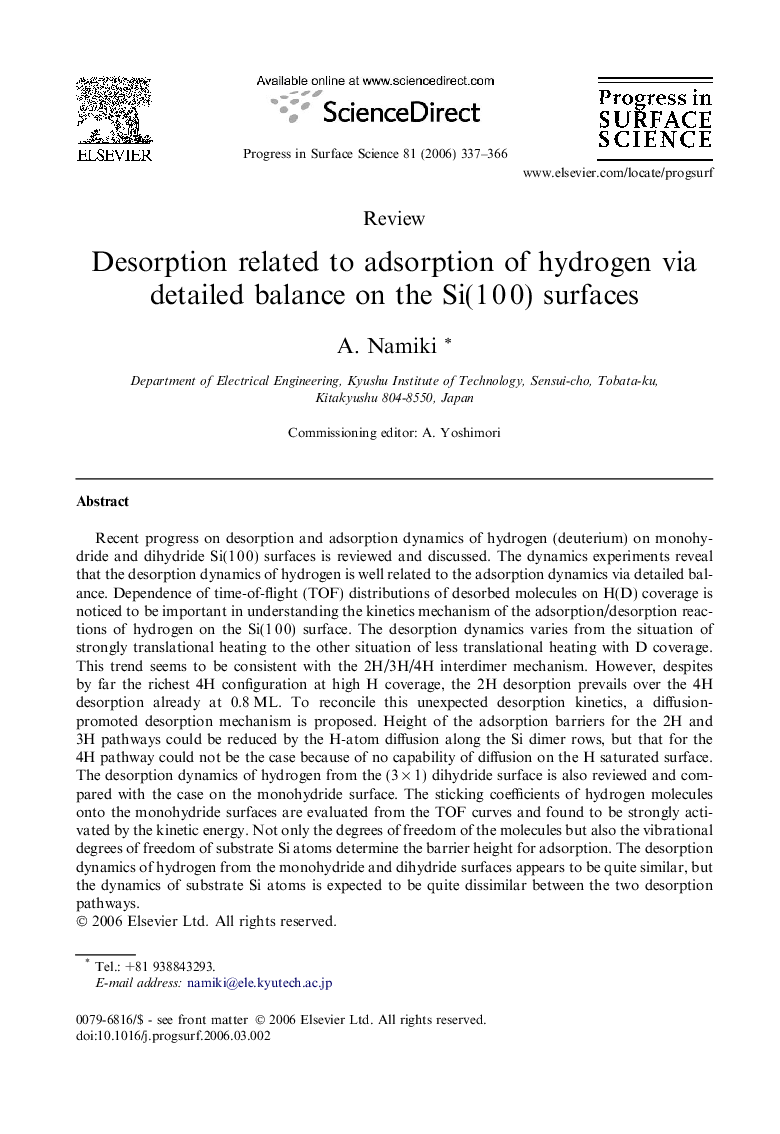| Article ID | Journal | Published Year | Pages | File Type |
|---|---|---|---|---|
| 5420107 | Progress in Surface Science | 2006 | 30 Pages |
Abstract
Recent progress on desorption and adsorption dynamics of hydrogen (deuterium) on monohydride and dihydride Si(1Â 0Â 0) surfaces is reviewed and discussed. The dynamics experiments reveal that the desorption dynamics of hydrogen is well related to the adsorption dynamics via detailed balance. Dependence of time-of-flight (TOF) distributions of desorbed molecules on H(D) coverage is noticed to be important in understanding the kinetics mechanism of the adsorption/desorption reactions of hydrogen on the Si(1Â 0Â 0) surface. The desorption dynamics varies from the situation of strongly translational heating to the other situation of less translational heating with D coverage. This trend seems to be consistent with the 2H/3H/4H interdimer mechanism. However, despites by far the richest 4H configuration at high H coverage, the 2H desorption prevails over the 4H desorption already at 0.8Â ML. To reconcile this unexpected desorption kinetics, a diffusion-promoted desorption mechanism is proposed. Height of the adsorption barriers for the 2H and 3H pathways could be reduced by the H-atom diffusion along the Si dimer rows, but that for the 4H pathway could not be the case because of no capability of diffusion on the H saturated surface. The desorption dynamics of hydrogen from the (3Â ÃÂ 1) dihydride surface is also reviewed and compared with the case on the monohydride surface. The sticking coefficients of hydrogen molecules onto the monohydride surfaces are evaluated from the TOF curves and found to be strongly activated by the kinetic energy. Not only the degrees of freedom of the molecules but also the vibrational degrees of freedom of substrate Si atoms determine the barrier height for adsorption. The desorption dynamics of hydrogen from the monohydride and dihydride surfaces appears to be quite similar, but the dynamics of substrate Si atoms is expected to be quite dissimilar between the two desorption pathways.
Related Topics
Physical Sciences and Engineering
Chemistry
Physical and Theoretical Chemistry
Authors
A. Namiki,
